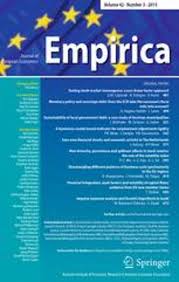
The Synchronization of Wage Dynamics across EMU Members: A Test of the Endogeneity Hypothesis
We test the hypothesis of an endogenous currency area for the labor market of the Euro area: has the introduction of a common currency caused wage dynamics to become more synchronized and to be able to cushion for asymmetric shocks? Trade intensity, sector specialization and financial integration are tested for being the driving forces for the endogenous synchronization of wage dynamics. We use regression techniques with instrument variables, and find evidence of persistent asymmetries in nominal wage formation, despite a single currency and monetary policy. We explain the result with more specialization following financial integration, and with still existing differences in wage formation and labor market institutions. We conclude that the euro zone is not endogenous with respect to wage formation. Rather, there are incentives for beggar-thy-neighbor policies in the Euro area.




